Looking at the trends in film throughout the last few years, despite the occasional disappointments and the ever present impact of streaming services and the millstone that their home premieres, and option paralysis offer audiences and creators alike, it’s always heartening to see original works of art and entertainment blossoming, with a new wave of truly experimental, individual indie film making and blockbusters that feel bolder and grander than they have since The Lord of the Rings Trilogy ended. Yes there are still aggressively commercial ventures and the industry requires closer watching than ever given the rise of new technologies, we must never stop evangelizing the value of auteurs and craftspeople in the film industry. Every film that comes out is the end result of thousands and thousands of hours of dedicated labor, and each film on this list represents a creative team of hundreds who went above and beyond to bring something magical into the world.
24. Ghostlight

Ghostlight is a heartfelt look at a Chicago family learning to move on from a tragedy while showing the power and importance of theater and art. Keith Kupferer—in my favorite performance of the year so far—plays Dan, a local construction worker who lives with his wife, Sharon (Tara Mallen), and their talented but troubled daughter, Daisy (Katherine Mallen Kupferer). When Dan unexpectedly joins a local theater’s production of Romeo & Juliet, he starts to confront his emotions towards a recent family tragedy that might help bring him, his wife, and his daughter closer together.
Directors Alex Thompson and Kelly O’Sullivan (who also wrote the screenplay) crafted a beautiful story about a family coming together in the face of tragedy through the power of theater. It is a layered script that dives into the human condition, communication, learning to express your emotions, and the importance of theater. Ghostlight is a wonderful movie full of humor, drama, and raw human emotion.—Kevin Wozniak
23. The Greatest Hits

Time travels stories in any medium are difficult, and although I’m always game for whatever rules a particular storyteller wants to present, most of the time, inconsistencies happen and throw off the story that is ultimately being told. If you want to tell a time travel story, no one says the rules must be given. However, if they are, I prefer that they are followed. If not, there better be a good reason, whether it’s story, character, or thematically related. Thankfully, writer-director Ned Benson nails it with The Greatest Hits. He keeps it simple enough so as not to over-complicate things. Lucy Boynton’s Harriet Gibbons can travel through time whenever she hears music that’s tied into a specific time in her life, specifically her time spent with her now-deceased ex-boyfriend Max, who she is still grieving as the film starts.
I love that the film drops us into it. We don’t see Harriet discover this ability, and she already has her best friend, Morris, convinced. Benson is smart to start the story where it needs to start. This is a love story, not about Harriet and Max, but about Harriet and David, someone who is also grieving a loss. The film is special in that it’s a time travel romance that isn’t really about time travel or the relationship that’s tied to the time travelling aspect. It’s about how a loss can be so devastating that it holds us back, in much the same way that Benson’s previous feature, The Disappearance of Eleanor Rigby, touched on. Ultimately, The Greatest Hits pays off the time travel without contradicting anything, and ends on what is, for me, the perfect note. I don’t need to know what happens next. Sometimes, smiling faces say everything.—Michael Suarez
22. One Life
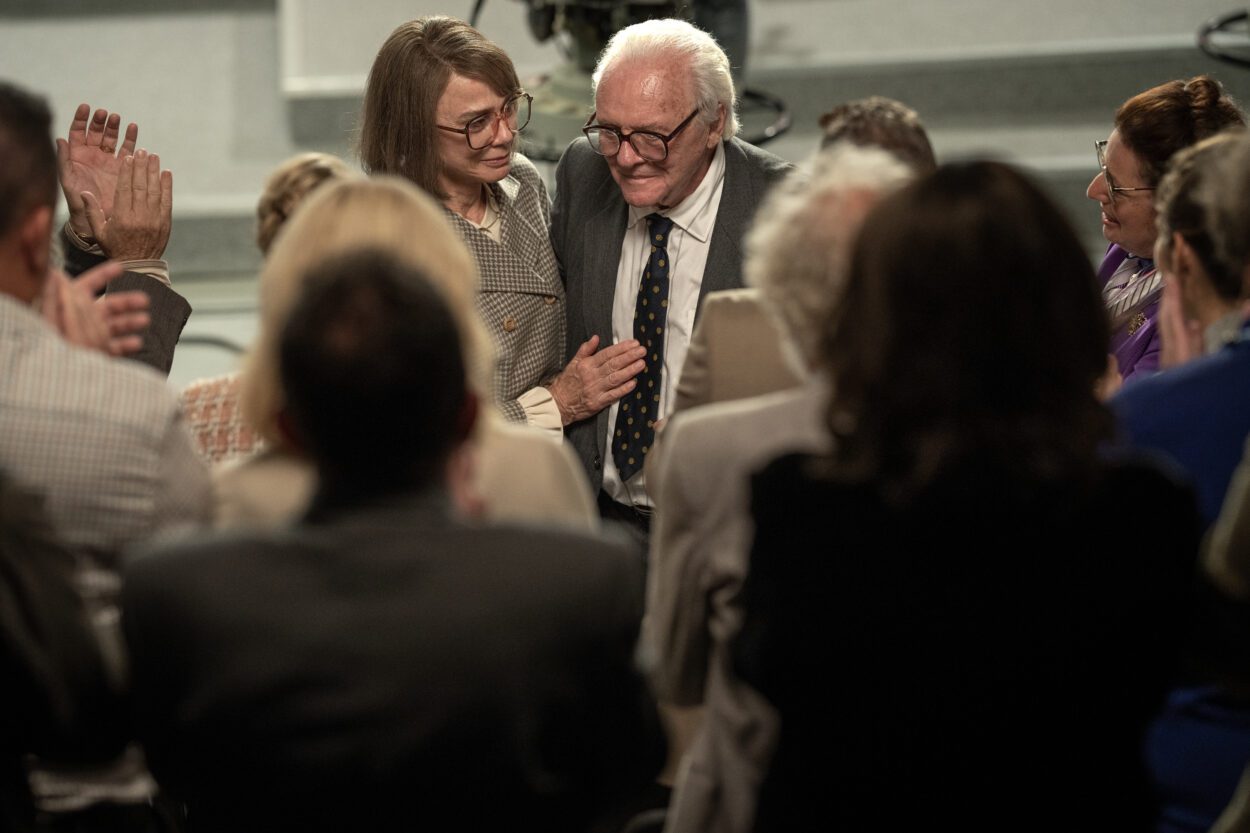
Straight out of Casablanca, call me what Captain Louis Renault calls Rick Blaine with convincing judgment: a rank sentimentalist. If a movie hits me hard enough to earn my swept investment enough to be yanking tissues from a box, it’s going to earn high marks for its captive power. One Life was the highest of those types of movie experiences for me in the first half of 2024.
Blame the school teacher I embody by day, but One Life struck chord upon chord with me from the standpoints of melodrama, history, legacy, and performance. The film tells the story of British banker Nicholas Winton who helped orchestrate the rescue and relocation of 669 Czechoslovakian children at the onset of the Nazi Holocaust. Winton is portrayed by two actors in separate timelines– The Dig‘s Johnny Flynn during the World War II scenes and two-time Academy Award winner Anthony Hopkins in his advanced senior years. His story never became publicly known until the BBC TV program That’s Life broke it in 1988 and brought aged survivors to meet the man responsible for saving their lives.
Many people possibly know the Winton story from a tear-jerking viral video montage of that very program which has amassed 42 million views in 14 years on YouTube. Like a good historical movie and biopic should, One Life gives patient audiences the full breadth of the powerful story and astounding experience that 99 seconds on YouTube cannot fully accomplish. With very little sugarcoating, One Life admirably positions the pain of its history as high as the worthy celebration. Hopkins’ performance is an absolute gift to convey those emotions respectfully, and the cinematic lionization of both the actor and the historical figure are justly deserved. —Don Shanahan
21. Guy Friends
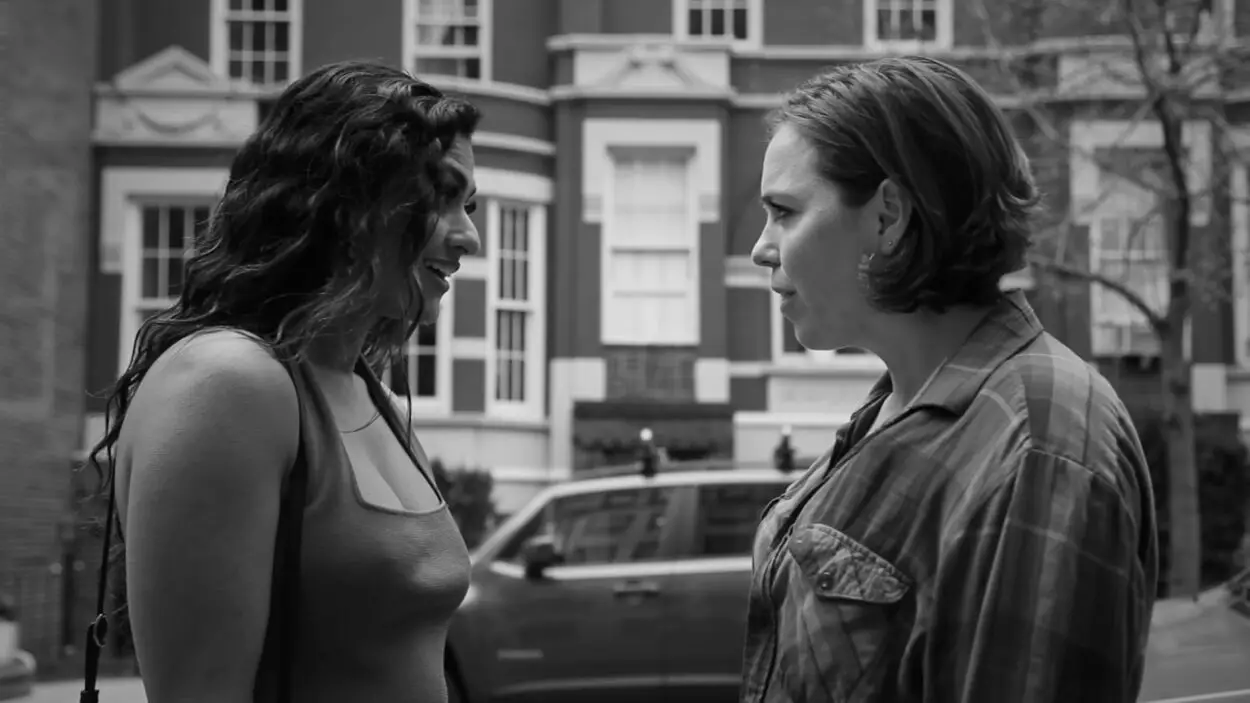
The death of the romantic comedy has been greatly exaggerated over the last few years. Exceptional examples of the genre are still being made, even if they are not the multiplex staple they used to be. Nowadays, it takes sifting through a heap of drivel and pretenders on streaming services and cable channels that keep churning out crumbling cookies from the same cutter. That’s what makes a diamond-in-the-rough like Guy Friends so special.
The micro-budgeted film is about Jaime Sharma (Kavita Jariwala), a New Yorker who, despite having a boyfriend, tends to have many platonic male acquaintances orbiting in her life. They include her neighbors, co-workers, and the regular employees of the businesses she frequents. She can’t see it, but they’re all in love with her. When word gets out that Jaimie becomes single, those pining men—all in the same immediate day—hilariously jump at the chance to pour their hearts out and tell her exactly how they feel. It takes the blunt and fresh advice of her newly-acquired girlfriend Sandy (Katie Muldowney) to set Jaime straight and help her navigate these crowded romantic waters.
Made for peanuts numbering in the mere thousands by writer-director Jonathan Smith and starring two first-time actresses, Guy Friends instills an approachable and respectable perceptiveness and honesty to know that, just because the movie is a rom-com, doesn’t mean it has to be constructed with sweeping, grand, and loud gestures of pontificating bluster and convenient happy endings that earn a crowd of on-screen applause and tossed bouquets. Guy Friends demonstrates that frank and funny happenings of this kind of kooky conundrum occur in an unfinished and undetermined real world of smart adults, not screenplay caricatures. For that, you’ve got something entertaining and special waiting to be discovered. Find this buried treasure on Hoopla Digital with your local library card. —Don Shanahan
20. Paradise

Paradise is a wonderful throwback that takes a taste of classic cinema and spices it up to serve something fresh. It’s tempting to say the movie could be made in any decade, but there’s an anachronistic quality to the flick making it perfect for right now. Even within the framework of something familiar, Paradise manages to be its own movie by sticking to its guns, a combination of punk rock styling, thrilling action, and engaging characters.
The story is a classic Western tale of revenge. Patricia Ellison plays Ella Patchet, a hot-headed young lady with an itchy trigger finger. She lives in a tropical backwater with her father, Sheriff Dan (Bashir Salahuddin). When her pa gets murdered the killer seems obvious until Ella goes gunning for revenge.
Paradise encapsulates the best of revisionist Westerns, questioning whether justice is a black and white situation. There’s an almost noirish descent for Ella as she realizes shooting the bad guys puts holes in a soul. Yet, once the bullets start flying, they attract more trouble, and the path of a gunslinger is a bloody trail leading to tragedy—one step onto it and there’s no stopping. Still, though the cost of being a hero may be high, someone must pay the price or else the wicked win.
Crisp, concise writing combines with a stellar cast alongside some tight cinematic construction to keep Paradise flowing at a smooth pace. Tia Carrera is marvelous as an eccentric queen pin, and her role is a marvelous example of how the film establishes its characters through performance as well as dialogue. The reality of this neon tinted tropical locale is easy to glean just by watching, while the classic Western aspects fill in any other blanks.
Paradise is an indie gem. Everything in its presentation makes the film unique. Yet it borrows just enough from old movies to have the comforting feel of the familiar. Thanks to a fabulous, diverse cast the characters come alive, and some smart direction brings a living world into focus as well. Giving this movie a chance is sure to gun down boredom on a Saturday night.—Jay Rohr
19. Cabrini
Cabrini is a sweeping epic about a real-life nun who led a life of steely grit and resilience, doggedly determined to open and operate orphanages worldwide. As the titular lead, Cristiana Dell’Anna is majestic, even if her performance contains a narrow range of notes. From nearly the first frame to the last, the film keeps her face center screen, echoing Nolan’s fixation on Cillian Murphy in Oppenheimer. Akin to Cillian, Dell’Anna conveys multitudes and layers of emotion with just her cheekbones and eyes. Capturing the layers of a singular disposition with exquisite clarity is not easy, and Alejandro Gómez Monteverde does so gracefully and precisely. He is quickly proving to be a budding auteur, regardless of what the politically charged zeitgeist may claim. Both Sound of Freedom and Cabrini are polished, tense, well-acted, and executed films—aesthetically, visually, and narratively.
Beyond his knack for compositional framing and traditional storytelling, Monteverde has a clear knack for luring dynamic performances from his lead actors. Dell’Anna‘s virtuoso presence grounds Cabrini’s traditional, humanist principles. Her feistiness and stern defiance of the social, theological, and institutional patriarchy are intermixed with a deep well of reticent grief, maternal solicitude, and unflinching tenacity. When she smiles, you melt; when she scoffs, you recoil; when she glares, you wince. Her central performance is a force of bountiful altruism and urgent philanthropy. In an unbiased industry, there would be talk about her Academy Awards prospects, as her charisma and screen time check all the boxes.
On the aesthetic side, the world-building is fully realized. There are stunning images I kept reflecting on long after they’d disappeared, imprinted with instantaneous specificity. Beyond the cinematography’s sheer beauty, the production’s magnitude, and the poetic staging, Monteverde displays seasoned command over the pacing, thematic flourishes, and rousing ethos. Cabrini evokes respectful cinematic associations, including Terrence Davies’ painterly flair, Mike Leigh’s theatricality in Topsy-Turvy, Martin Scorsese’s historical detail in Gangs of New York, and Kurosawa’s moral imperatives in Ikiru.
Dealing with themes of anti-Italian racism, social inequality, mayoral cronyism, compromised clergy members, and misogyny within the Vatican, not to mention some poignant commentary on thievery and prostitution as professions of desperation, Cabrini contrasts cynical forces with a character defined by steadfast conviction and optimistic resolve. Such sanguinity may be too idealistic or hagiographic for modern audiences and our jaded sensibility. But in the face of dereliction and brutality, the presence of stalwart magnanimity earns its warm sentimentality.
Chronicling a woman who sacrificed her final years to serve the fundamental needs of others, Cabrini celebrates a neutral form of Christianity that may be uncool to staunch secularists and intellectually rudimentary. Still, it’s also irrefutably benevolent and practical—offering an ethical fiat so commonsensical and basic (stressing the need to build, tend, nurture, and sustain the vulnerable and innocent) that it seems downright revolutionary. Supporting a film earnest enough to champion caring for displaced, impoverished children shouldn’t be so complicated, especially when the film is made this well—Paul Keelan
.
18. Femme
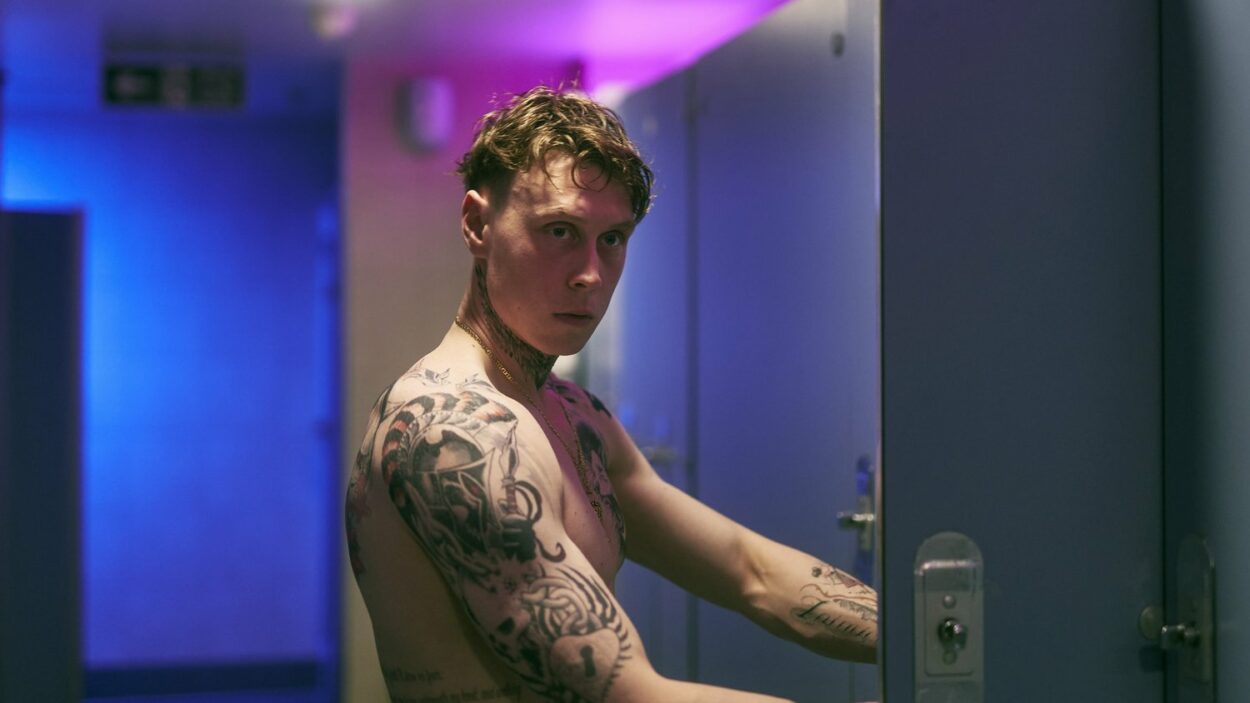
Femme is a slippery, erotically convoluted examination of the way sexuality and power dynamics ebb, flow, morph, twist, and invert. Co-directed by Sam H. Freeman and Ng Choon Ping, the film begins with a brutal, homophobic attack that leaves Jules (Nathan Stewart-Jarrett), a popular drag performer at an East London nightclub, bloodied and naked. Months later, Jules runs into the primary assailant, a macho drug dealer named Preston (George MacKay), at a gay sauna. Realizing Preston does not recognize him outside of his drag persona, Jules decides to seduce Preston, inciting a vengeful romantic tryst successfully.
As the two secretly meet for dates and sex, Jules’ intention remains titillatingly ambiguous and never fully clear. Is he seducing Preston – a repressed, volatile, outwardly cis male – in a ploy for revenge? Has he fetishized the idea of acquiring romantic power over his alpha assailant, slowly coaxing Preston into a space of submissiveness? Is he seeking catharsis by luring Preston’s softer, intimate, more tender sensibilities to the forefront, thereby reforming his former attacker? As Jules’ indeterminate motives turn increasingly indecipherable, the film’s tension surmounts, creating a beguiling investigation of how role-playing can cross over into a threshold of becoming the Other, blurring one’s orientation (in every sense) and identity altogether.
The tumultuous affair between Jules and Preston is equal parts sexy and dangerous, endearing and disturbing. Filled with kinky maneuvers and psychological interplay, both parties dodge easy deductions. Their transgressive, evasive dynamic challenges gender archetypes in every sense, = excoriating machismo, exploring tortured self-repression, showcasing social peacocking as a survival mechanism, and interrogating the way we camouflage ourselves to satisfy the panoptical status quo of a local, normative ecosystem.
Neither Jules nor Preston remains fixed nor static; both evolve and grow, tethered to forces of attraction and repulsion that transcend control or calculation. The sheer opacity at play in their relationship feels like a rarity in today’s overly self-assured, preachy storytelling tendencies. Jules and Preston’s romantic tension vacillates between vengeful empowerment and cathartic self-degradation. Their chiasmic intertwining resembles Ingmar Bergman’s Persona, dissecting authenticity and identity into amorphous, non-binary, irreconcilable paradoxes.
As the two metaphorically switch between top and bottom positions, the lines between penitence and revenge, sociopathy and empathy, sexual awakening and subjugation, erotic obedience and submissive sublimation, sadistic antipathy and romantic masochism become increasingly difficult to discern. In a world where pretenses run rampant (for both Jules and Preston, respectively), existing undercover becomes a means of redemptive self-exploration and experimentation. Oscillating between the poles of romantic intimacy and retaliatory loathing, the difference between perpetrator and victim grows increasingly indeterminable until the two achieve a perverse homeostasis. Like cinema, performative role-playing/reversal offers a path toward salvation.—Paul Keelan
17. All of Us Strangers
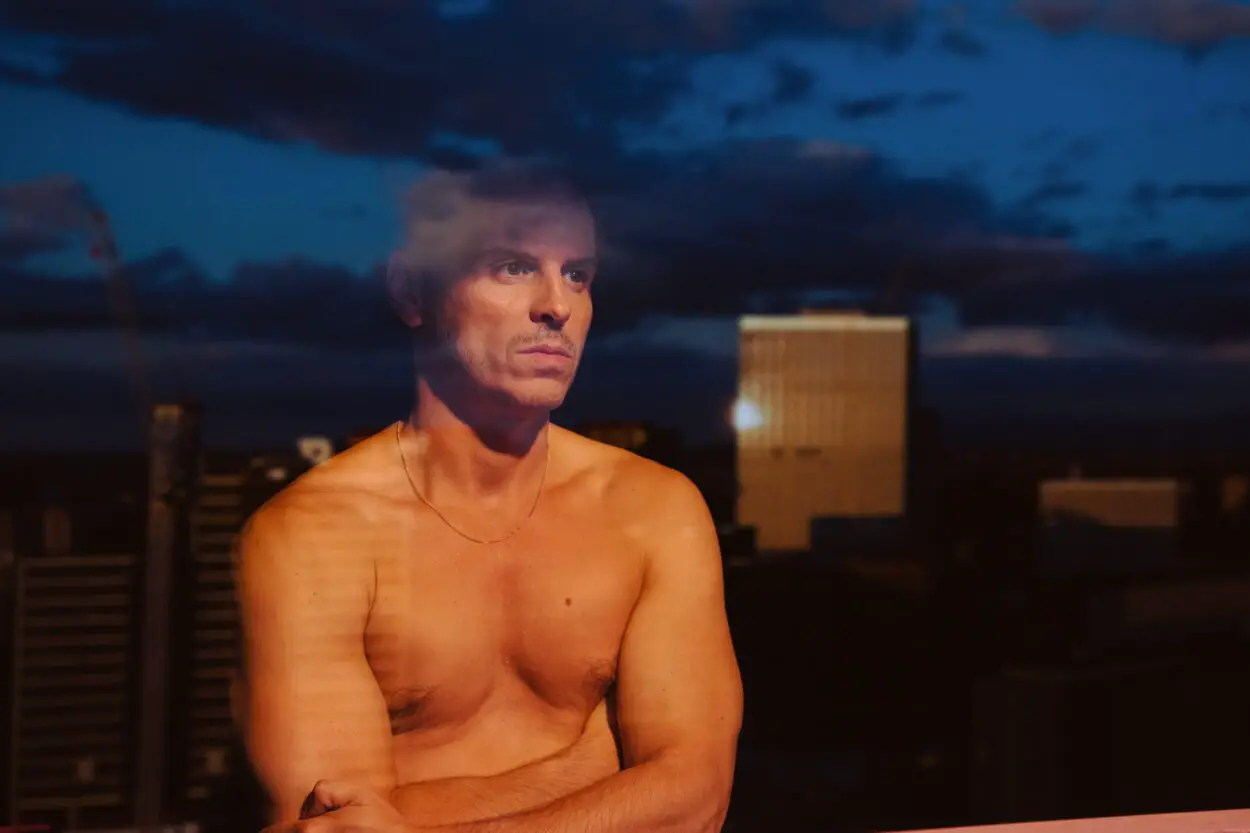
As successful as it is, part of me will always resent a film this transparent in its aims of completely destroying you emotionally. Seriously, this film is going out of its way to hit every button it can to make you tear up and there were times when I felt that manipulation. There were also times when I didn’t care because it was so acutely powerful and sincere in its methods and clearly came from a place of personal experience and artistic vulnerability. Some moments here are so guileless and even downright silly that it strains how seriously one can take it, but it always won me back by staying committed to the idea. You kind of need to accept that we’re tiptoeing around the fringes of a ghost story or some kind of romantic fantasy.
All of Us Strangers follows lonely screenwriter Adam (Andrew Scott) a middle-aged orphan as he meets and falls for Harry (Paul Mescal), a sweet younger guy from the apartment below, which dredges up painful memories from his childhood with his parents (Jamie Bell and Claire Foy). The scenes between Adam and Harry are very cute and heartfelt, but its in the scenes where Adam is reunited with his late parents that the film really comes alive in a profoundly real and painful way. They feel so real, so raw and genuine, with the dialogue and setting impeccably observed and the performances so powerfully eloquent. Foy and Bell are both just incredible here, their awkward, conflicted mum and dad energy is so full of pathos and warmth. Scott is phenomenal too, playing some very silly scenes with such vulnerability and conviction that you’re forced to take them as seriously as the film does.
That’s not to say that there aren’t playful or funny moments—the film’s observations about how the gay experience has changed over the last twenty years are really spot on—but frankly I really respect the tightrope this film walks between being really on the nose and poetic and so very real, human and authentic too. It’s also just absolutely radiantly beautiful as well. The nostalgic needle-drops are exquisitely utilized and the cinematography is outstanding, making the most mundane of settings radiate with light and color. It’s a very open yet taut melodrama and a character study of a man wrestling with grief, trauma and loneliness and how the two have become inextricably linked in a modern world of urban disconnection as he desperately soul-searches for closure. But above all it is about the redemptive power of love and how, with enough insight and understanding, it can lay to rest even the most painful and traumatic of experiences.—Hal Kitchen
16. Hundreds of Beavers
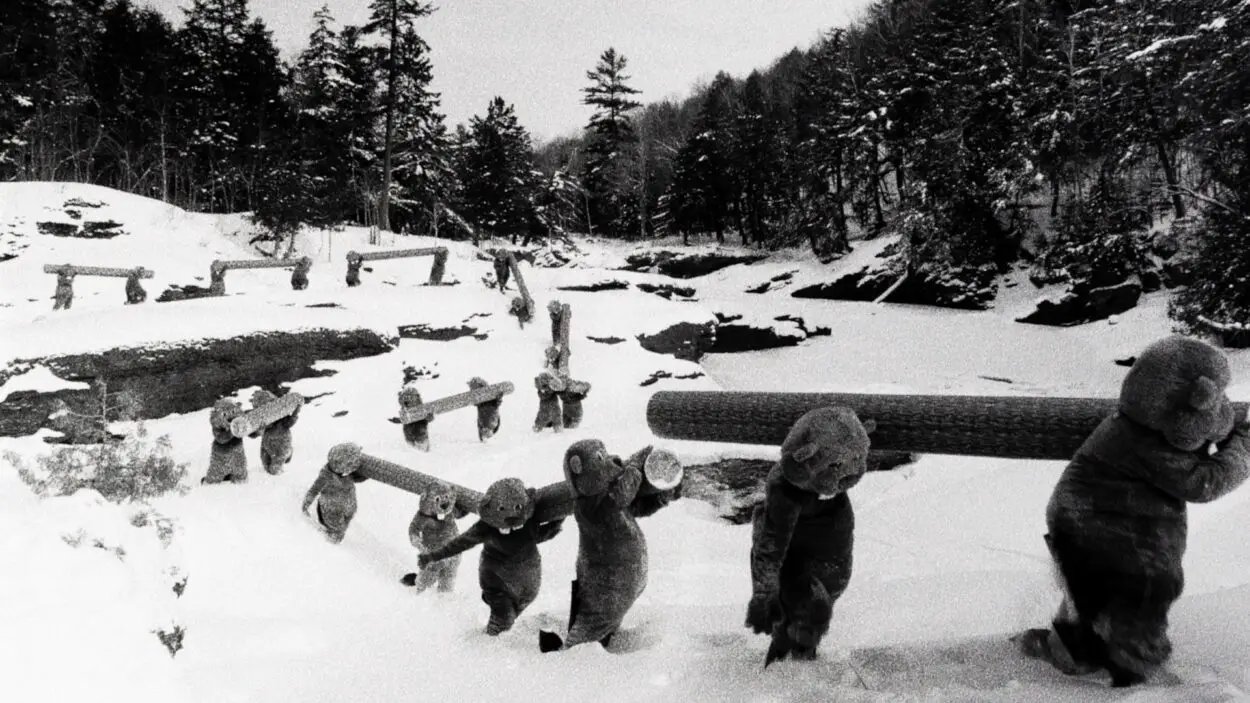
Hundreds of Beavers is a psychedelic romp through the frigid plains of the Midwest and the strange genius of its creators, first-time full-length feature director Mike Cheslik and his co-writer and lead actor Ryland Brickson Cole Tews of the prior indie hit Lake Michigan Monster. And it is simply a hoot, a real victory for the DIY indie filmmaking ethos and an astonishing, nightmare-fueling, side-splitting work of unique cinematic expression.
Who knew in 2024 a silent, black-and-white film mixing animation with live action pastiche could make so much sense? Its influences are all over them map, from Buster Keaton and Max Fleisher, to Rube Goldberg, Wile E. Coyote, and Dudley Do Right and Lotte Reinenger, Guy Madden, and Mel Brooks, with a video-game style narrative and plenty of fun action and chase scenes.
Tews plays Jean Kayak, an oft-besotten applejack who clumsily burns his own orchard and thus must (trust me) kill enough beavers to earn back his livelihood and, incidentally, the love of a fair maiden. But never mind the plot: it’s only there to engage Jean in mortal combat against hundreds of beavers—and not a few rabbits—in increasingly absurd Looney Tunes-style set pieces, each a little more inventive than the last. Shot in a beautifully grainy black and white over the film’s four years of production, Hundreds of Beavers‘ aesthetic is borrowed from the silent era, with no dialogue, just a few title cards, and a lively musical score. A film like this will never earn the big box office of a Dune sequel or Apes franchise film, but it’s going to please everyone who sees it with its pure manic joy. — J Paul Johnson
15. Lisa Frankenstein
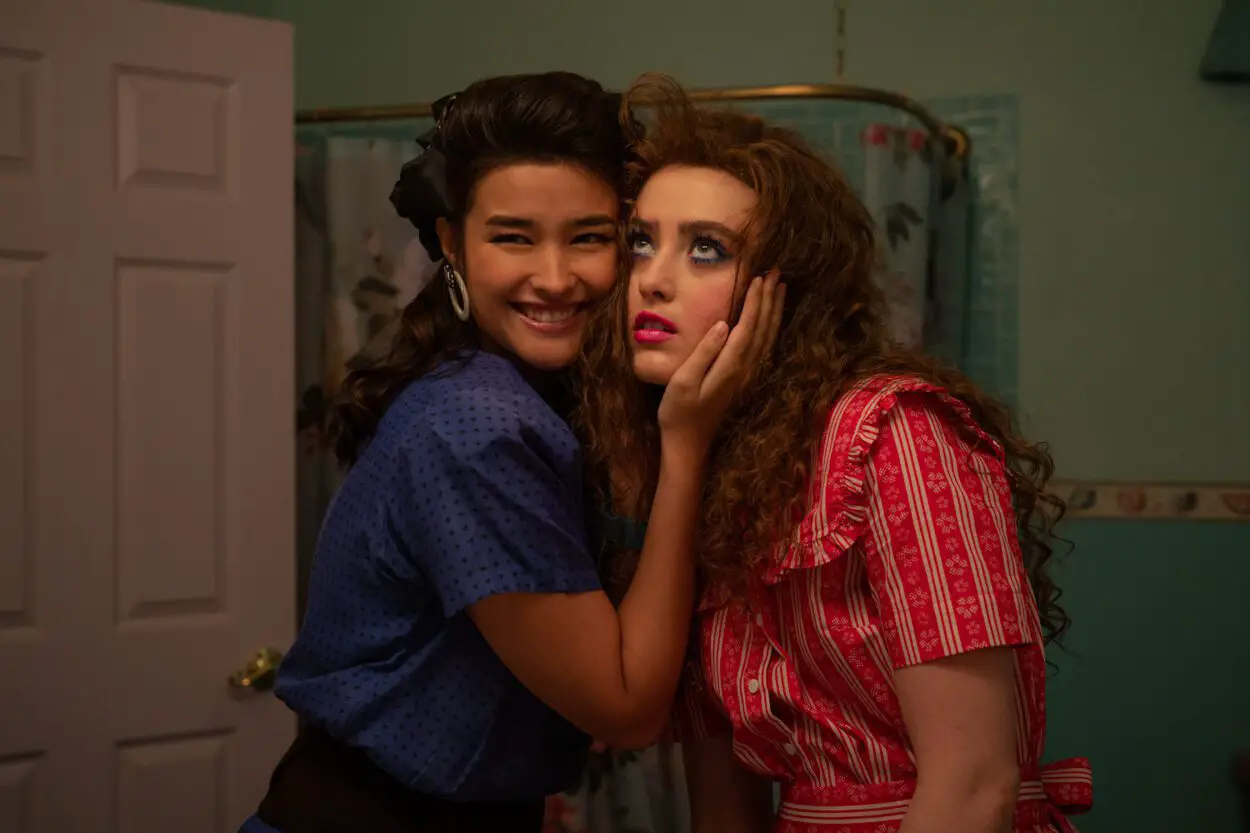
Ever since Paranormal Activity 4, Kathryn Newton has been on my radar. Talk about charisma. She might not always get the best roles in the best films, but whether it’s comedy, drama, or both, she can consistently deliver. I’ll never understand why some movies become popular and others don’t, but it ultimately doesn’t matter. Lisa Frankenstein is my favorite thing from Diablo Cody since Jennifer’s Body, and don’t kill me, but I think I like it even more than that one. Zelda Williams’ direction is fun without being too showy, and it’s one of my favorite kind of period pieces. In this case, it’s an ‘80s film that doesn’t necessarily celebrate the time so much as uses it as an aesthetic.
That isn’t to say that the movie is superficial, because it’s certainly got things on its mind, whether it’s what Lisa goes through (before and after the Creature makes his entrance), the Creature playing the part of the best friend who Lisa should clearly be with but can’t seem to see it, or even Lisa’s sister Taffy, who has more layers than her first impression in the movie leads us to believe. Lisa Frankenstein is a good time and a pretty solid throwback to the era in which the movie takes place. As for the title character, Newton’s Lisa Swallows will hopefully become an iconic character. To me, she already is.—Michael Suarez
14. The Fall Guy
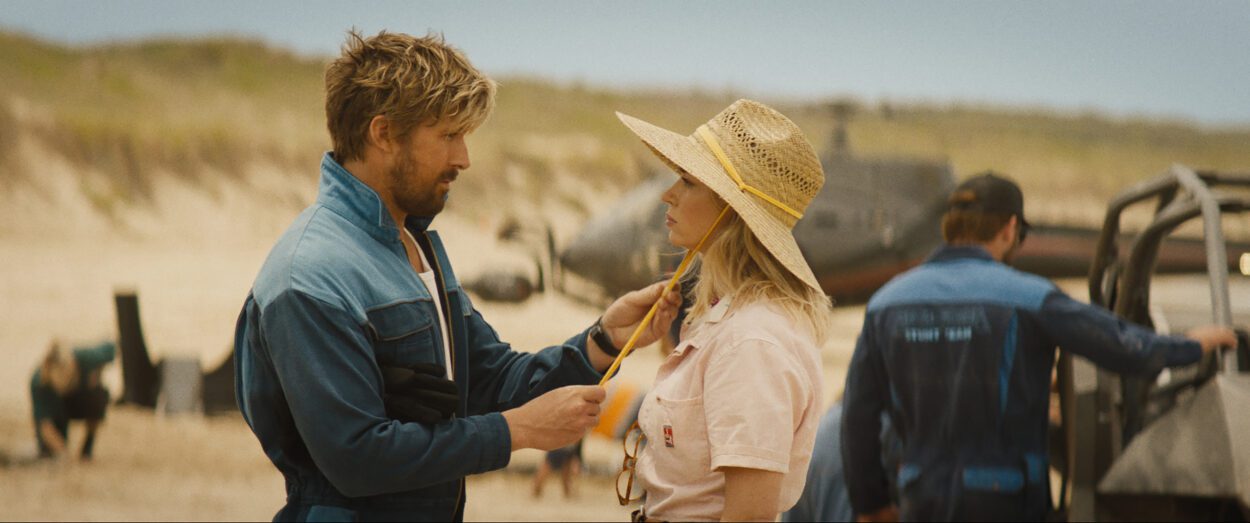
Much has been said and discoursed about The Fall Guy. Does this movie suck? Is it a box-office bomb? Are Ryan Gosling and Emily Blunt still movie stars? Enough, with all of it. The Fall Guy is a good movie. Let me be a bit bolder: it is a grand old fun time at the pictures. It’s far from perfect—the film takes too long to find its footing, the third act is messy, and you have some iffy CGI here and there. But, this is the movie we’ve been asking for. A (mostly) original action romantic-comedy featuring two recognizable stars. It’s funny, charming, and something the whole family can enjoy. At the end of the day, people didn’t show up on opening weekend and the movie was hastily pushed to VOD. But, The Fall Guy has legs and its drop-off from week to week has been less than expected. People will go to these movies if you keep them in theaters, plain and simple.
As viewers, however, it is not our job to assess a film’s box office performance in determining the quality of the project. We have to evaluate the movie on its own basis. Gosling is having a ton of fun, taking what worked as Ken in Barbie and infusing that with his movie star personality. Blunt gets a lot more to do here than in Oppenheimer and has crackling chemistry with her co-lead. I do wish The Fall Guy was more rom-com than action-adventure, but I’m just glad this movie exists. I will be watching it many more times in the future because it’s so entertaining (and not because Ryan Gosling singing and crying along to “All Too Well (10 Minute Version) (Taylor’s Version) [From The Vault]” is something I can heavily relate to).—Aqib Rasheed
13. The First Omen
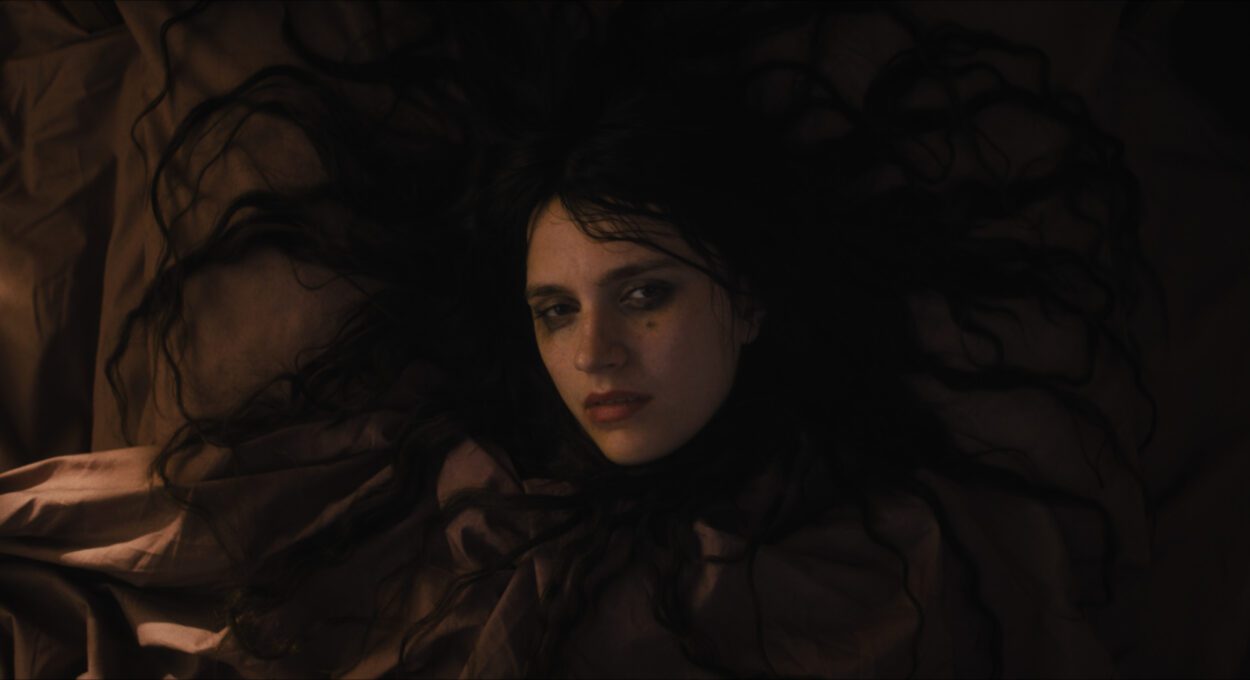
One of the best examples of a prequel that I can think of, The First Omen takes risks, further develops the mythology established in the original Omen movies, and is just damn good in its own right. Arkasha Stevenson’s direction is excellent, and as much as I’d love to see her direct anything in the future, I wouldn’t mind if she stuck to horror, because she knows what she’s doing. There are moments and shots in this movie that perhaps didn’t scare me but took my breath away.
I’m also impressed by how much it has to say about a woman’s autotomy, while not hitting the audience over the head with it. I wouldn’t necessarily say it’s subtle, but since Stevenson is going for full-blown horror rather than subtlety anyway, I’d say it works. As for what else is successful, it would be remiss to not mention the, frankly, outstanding performance of Nell Tiger Free as Margaret. Every year, actors give great performances in horror movies and don’t get the appreciation they deserve. Is Free necessarily on the level as, say, Toni Collette in Hereditary or Lupita Nyong’o in Us? No, but it’s still one of the stronger performances I’ve seen all year, and I’ll definitely be watching out for Free in more stuff as her career progresses.
Aside from the final few minutes, where The First Omen seems to begrudgingly tie itself to the original 1976 Omen, I must say that I loved it. There are twists as to what we thought we knew about Damian, and your mileage may vary with that, too. Ultimately, though, when the film stands on its own, as it does for the majority of its runtime, it’s excellent, and I cannot wait to see it again this spooky season.—Michael Suarez
12. Kingdom of the Planet of the Apes
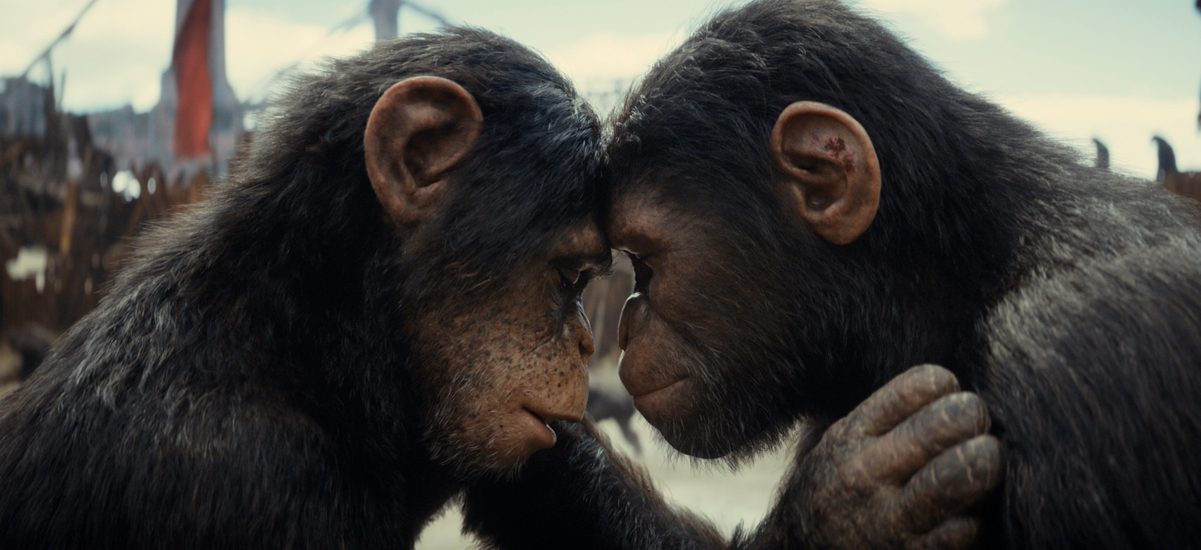
Few films utterly blew past my modest expectations of them this year more than Kingdom of the Planet of the Apes. The recent Planet of the Apes prequel trilogy—despite being possibly the only good prequel trilogy ever…?—was made up of movies I always appreciated but which haven’t really stuck with me as the years have gone on and I expected less of this given the departure of both director Matt Reeves and star Andy Serkis. It starts off with some strong world-building, establishing its new characters, principally Noa, a young ape raised in a new eden by a reclusive clan with its own local practices and traditions based around raising eagles to hunt. However, in classic hero’s journey fashion, he makes a mistake that brings danger to his home and he must undertake a perilous journey to new lands where he encounters others who challenge his preconceived notions of what is lawful and what is important.
Noa’s growth from a naive, idealistic young ape trying to please his parents and honor his traditions, to a proud, jaded, courageous and determined adult is phenomenal. I love how this film rejects binaristic morality, showing good characters commit acts of evil and showing empathy for cruel and violent characters, truly embracing the complexity of this conflict and the understandable motives of its characters in a way I don’t think the others ever did. It really does have the feel of a modern classic story, an old fashioned hero’s journey told as only today’s world could create with all the moral complexity and political verve one could ask. This is what blockbusters are made for: potent, serious, challenging and mythic modern fantasy storytelling. It takes a while to lay the groundwork and I’m knocking off a point for one of my least favorite tropes—a character who doesn’t speak English until the movie needs her (and it’s always a woman) to drop some exposition—but it steps up a gear at the midpoint and it’s on fire by the third act which had me on the edge of my seat.—Hal Kitchen
11. Evil Does Not Exist
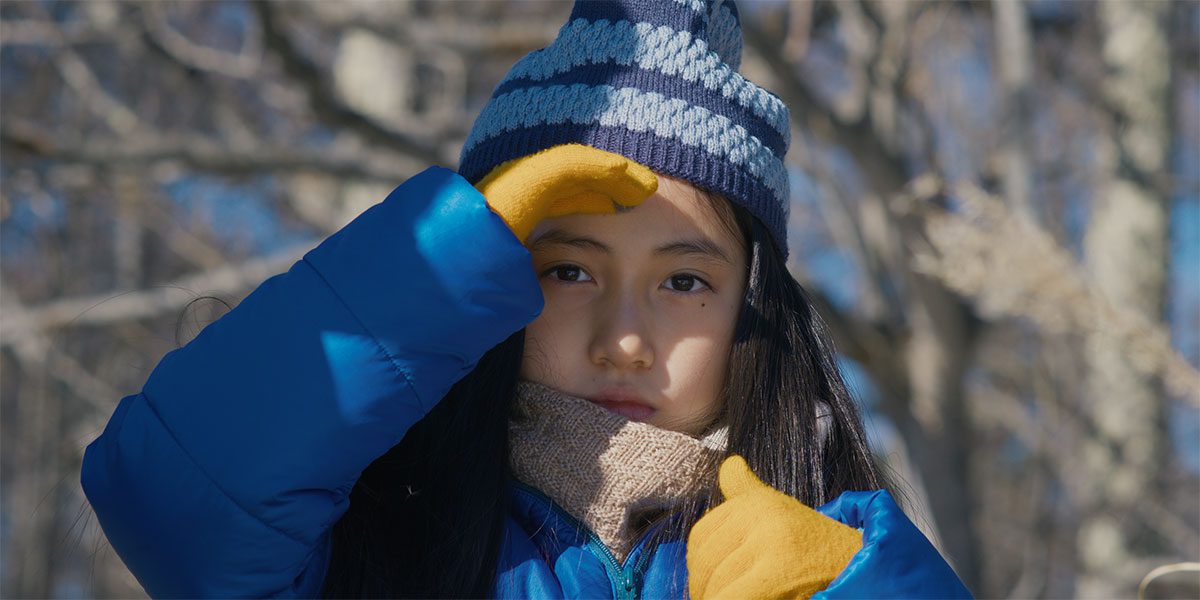
Ryusuke Hamaguchi rose to international acclaim in 2021 when his adaptation of Haruki Murakami’s Drive My Car shocked many when, in a rare Academy W, it was nominated for four Oscars including best picture and best editing. Since then, in my view at least, he’s released no less than two films both even better than Drive My Car and Evil Does Not Exist might just be his masterpiece. It’s a less academic film than Drive My Car or Wheel of Fortune and Fantasy, doubling down on their slice of life approach to explore the social tensions that arise when a group of developers declare their intentions to build a “glamping” resort in a quiet mountain town. The locals, including odd-job man Takumi (Hitoshi Omika) see through their transparent opportunism and cowboy capitalism, and after the well-meaning but clueless spokespeople are humbled at a town meeting, they hatch a plot to recruit Takumi to their cause, while dismissing most of the town’s actual concerns. What follows is a kind of anti-Local Hero, a minimalist, tentative, deeply compassionate and dryly funny culture clash between the gentle laconic widower and the out of touch city folk quick to romanticize his undeniably enchanting day to day.
Where the film might lose people, aside from its languorous pace, is in the ending, an abrupt escalation of the drama to a sublime, mythic level. I’ve heard some argue it doesn’t pull it off but speaking for myself I was utterly enraptured by one of the boldest and bitterest endings I can recall. It’s staggeringly poignant, after ninety minutes of slow, careful probing, to just suddenly slash to the bone like that, with such precision and care. It’s the perfect ending no one else would’ve even thought of, much less carried off so devastatingly, but it only works because Hamaguchi does such an incredible job of establishing a realist tone through the measured pacing and phenomenally observed and eloquent dialogue in the preamble. It’s an exquisitely cutting ode to the natural world and a quietly indignant indictment of its exploitation and abuse, yet always manages to foreground the individuals involved, all of whom have their own conflicting priorities and emotional needs. It’s an exemplary piece of drama, both admirably challenging and effortlessly humane and absolutely essential viewing.—Hal Kitchen
10. The Beast
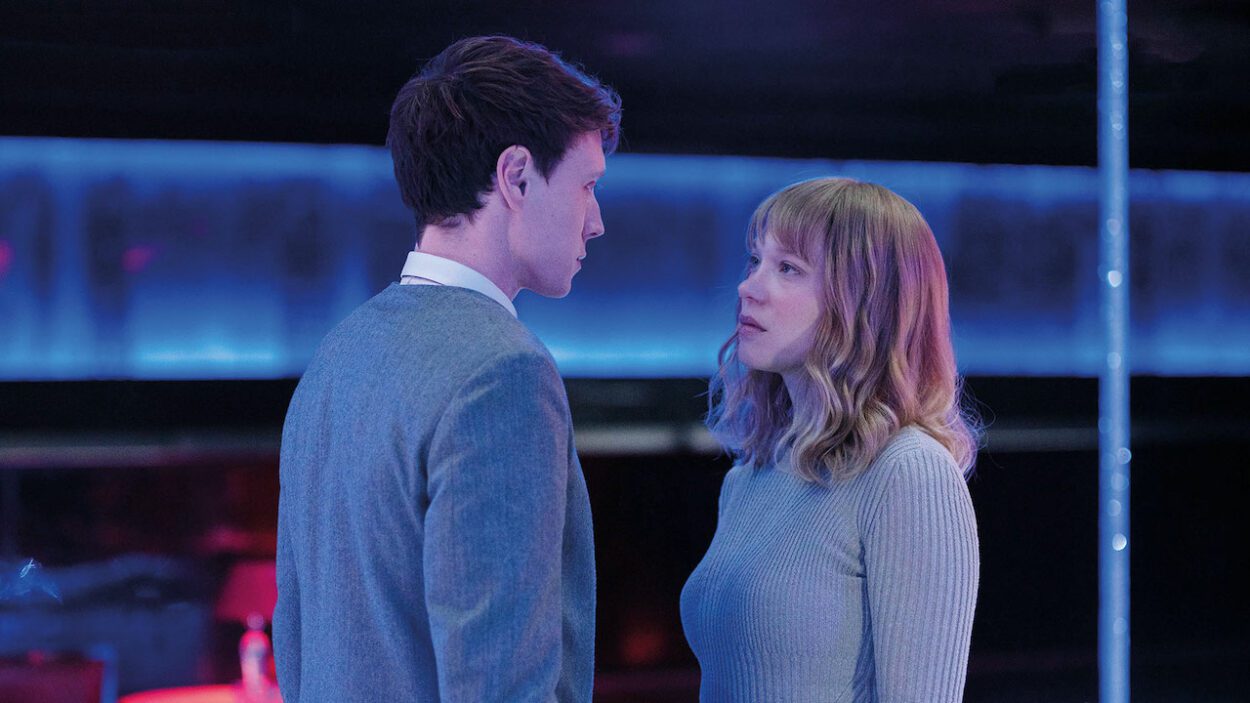
A loose adaptation of Henry James’s The Beast in the Jungle, Bertrand Bonello’s The Beast is a beguiling meditation on humanity’s affective dimensions and the existential threat emotionality faces in the age of AI. Starring Léa Seydoux and George MacKay, the film follows Gabrielle (Seydoux) as she undergoes a procedure to eliminate emotion from her DNA. This process requires slipping into past lives (and perhaps alternative realities) to cull, curate, and clean her memory bank of its emotive dimensions. Repeatedly, Gabrielle’s fate intertwines with Louis (MacKay) in unexpected ways, creating an uncanny sense of Déjà vu as their relationship’s many iterations elliptically weave and leap between settings, periods, and worlds with guileful dexterity.
To make matters more illusory, the film begins with a shot of Gabrielle standing, knife in hand, before a green screen as an unseen director commands her to visualize herself being trapped and terrified in a home in an archetypal horror scene and following up on this ambiguousness, the real and performative blur throughout the film, leaving audiences uncertain of whether they’re witnessing raw emotion or something performatively manufactured or simulated. An elusive character study, the narrative gradually veers into strange Lynchian territory, jumping from a French doll-making factory in 1910 to a 2014 incel-influenced subplot set in Los Angeles to a future scenario involving a life-sized and interactive doll in 2044.
What results is an incisive treatise on what it means to feel—performatively, emotionally, aesthetically—in opposition to a world where automation and pragmatism reign supreme. The topic couldn’t be more germane, and as circuitous as the film may be, Bonello manages to hold all its themes and stray narratives together in a cohesive manner, even as he creates an oblique, episodic, and disorienting canvas that defies easy reductions to logic. Sometimes, emotion overrides reason in the hierarchy of meaning. While the connective thread of The Beast may feel slippery and dizzying, the visceral and vicarious gut punch of its ultimate message will leave audiences, like its protagonist, reduced to a guttural scream.—Paul Keelan
9. The Last Stop in Yuma County – Jay
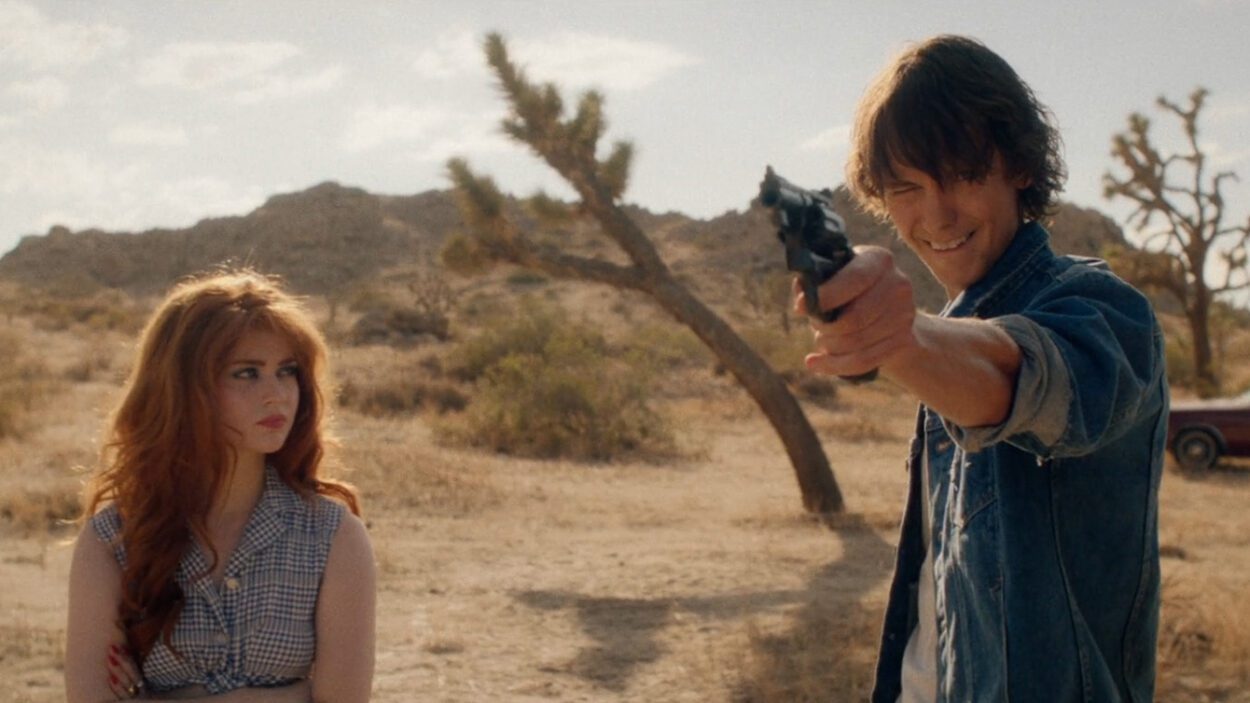
The Last Stop in Yuma County is a sharp story featuring sizzling tension, sinister villains, and unsettlingly relatable human frailty. It’s the kind of movie where audiences anxiously anticipate the worst. Writer-director Francis Galluppi lays out the track for this roller-coaster with singular skill. Even knowing when the thrills and twists will occur won’t prepare you for what unfolds.
The story is so simple audiences have likely heard it before. Desperadoes fresh off a bloody bank heist stop at a gas station. Fleeing the law, they have little patience, but circumstances dictate they wait at the adjacent diner. It quickly becomes clear these are wanted men, and a hostage crisis soon ensues. With more and more customers arriving, the pot is likely to boil over. But that’s just the start of the trouble.
The Last Stop in Yuma County is like watching a shark fin circling before an inevitable bite. Yet, this graceful killer is only as good as the people playing its moving parts. From top to bottom there isn’t a badly cast performer. Richard Brake is as hypnotic as a rattlesnake preparing to strike. Jocelin Donahue is delightful as a waitress straining to stay calm while watching for any chance to act. Jim Cummings is wonderful as a lily-livered salesman in over his head who digs himself deeper. Nicholas Logan plays a buffoon who’s as comical as he is dangerous.
There isn’t a wasted second throughout the film. Dialogue gets to the point. Scenes are shot to emphasize what needs attention. The audience is never given anything except another reason to anticipate the worst, and all the while there’s a macabre desire to see what occurs. The Last Stop in Yuma County is an expertly crafted movie that shows that how a story gets told is, perhaps, the most important aspect of the telling. In fact, it anticipates an audience’s familiarity with the premise to throw them off guard with its quickness. It’s like knowing a train is coming but not realizing how fast it’s moving until you’re beneath the wheels.—Jay Rohr
8. Hit Man
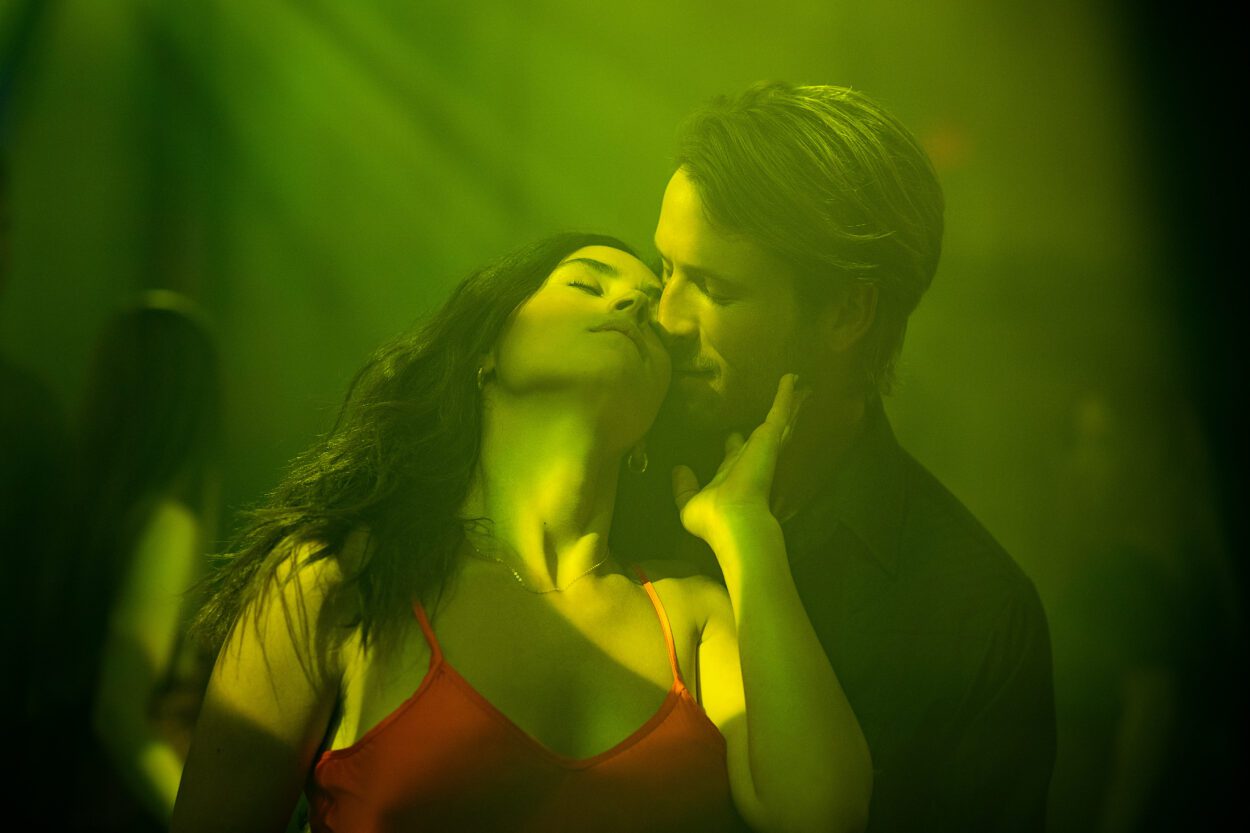
Hit Man is a movie where measurement in many areas and choices became key to pulling off a wild concept. It’s based on a tall tale true story of an unassuming man named Gary Johnson who moonlighted for years playing an assassin-for-hire as a special investigator for the Houston Police Department. On paper, the Catch Me If You Can-level preposterousness is undeniably intriguing and could go any number of solitary directions, from dark comedy and farce to a crime thriller. Working as writing partners to adapt Hit Man, actor Glen Powell and celebrated director Richard Linklater of Boyhood and the Before Trilogy leaned into all of the premise’s possibilities for comedy, thrills, and cleverness and honed them into one slick movie that boasted the best of all those available qualities.
With Powell as Gary Johnson, Hit Man was steered by his untapped matinee idol charisma. His supporting performances in the likes of Anyone But You, Top Gun: Maverick, and Everybody Wants Some!! flashed his megawatt potential, but this movie unleashed it fully and gave him the proper lead spotlight. Not to be undone, the talented Adria Arjona (who also represents another solid 2024 film not on this list, The Absence of Eden) increased Hit Man‘s temperature to give the movie an engaging level of heat and sexiness amid the cockamamie hijinks. Linklater has discovered or enhanced many up-and-coming stars over the years, and has done it for two more who are here to stay for a long time.
From music and costuming to the episodic salad bar of Gary Johnson’s created encounters for civilian collars, the rest of Linklater’s style and energy fell into ideal measurements and places. Hit Man is easy and breezy with assured confidence to present shady characters we come to love while placing them on an odyssey that keeps them, and us, guessing to a satisfying climax that still turns heads without breaking necks to do it. —Don Shanahan
7. I Saw the TV Glow
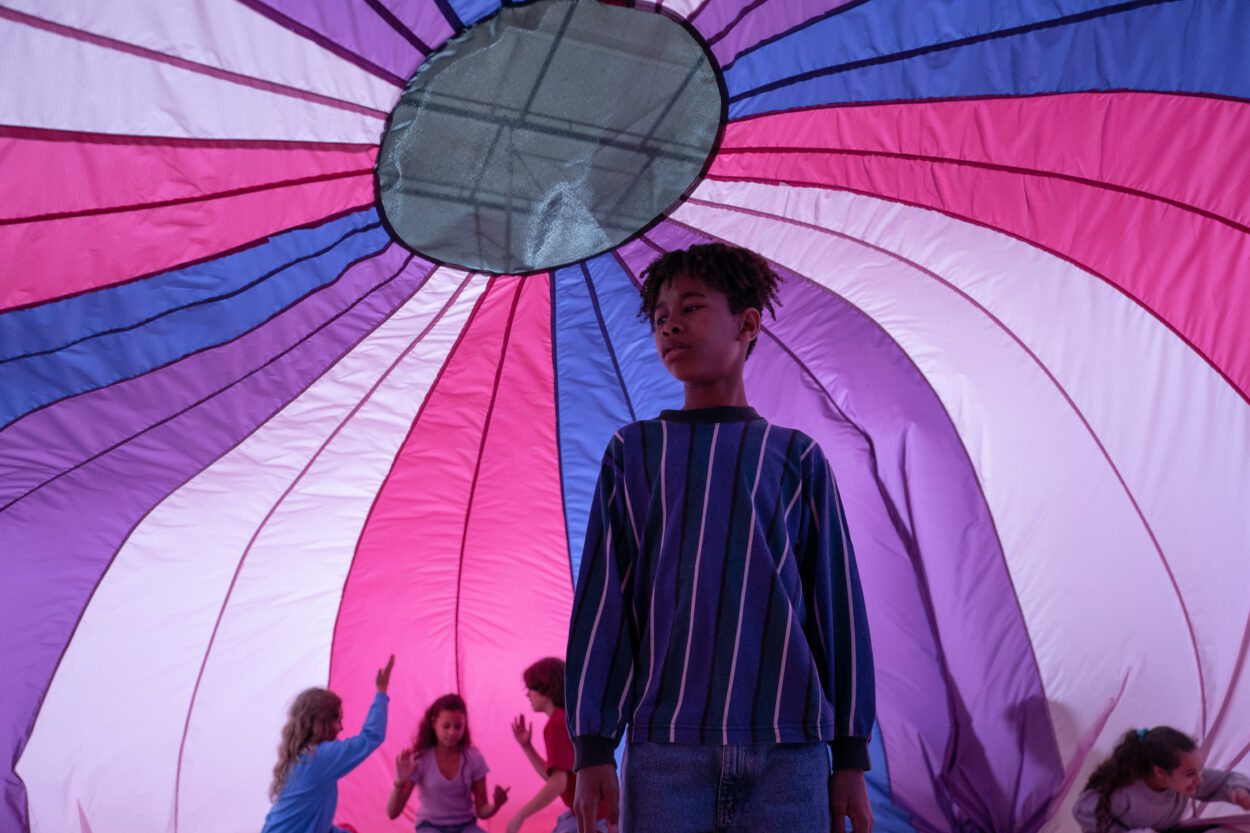
I Saw the TV Glow is a work of art. It is a film that demands multiple viewings and each time there is a new takeaway. Director Jane Schoenbrun has well-crafted an emotional story that explores queer identity and queer repression. It offers a hopeful but also devastating message about it never being too late to free yourself from what holds you back. Schoenbrun is one of the most exciting and unique voices in filmmaking right now. After We’re All Going to the World’s Fair, I had been desperately awaiting their next film. They have a clear understanding of their style and the stories they are looking to tell. The way they used color and lighting in this film was done in a specific and intentional way, it told a story of its own.
Bridget Lundy-Paine who plays “Maddy” and Justice Smith gave impactful, gut-punching performances. Lundy-Paine gives one of the most devastating monologues at the climax of the film. It is emotional and rips you open causing its audience to become completely raw. Although his character is meek, Smith gives one of the loudest performances. His constant repression and avoidance is a desperate scream into the void.
I Saw the TV Glow encapsulates the connection that young queer folks have with queer-coded characters. Characters that are not canonically queer but have been coded in the subtext that queer folks feel a relation to these characters. For some they come in the form of vampire slayers and demon hunters, for Owen, it is Isabelle from The Pink Opaque. Queer people desperately seek out connection to other queer people. They want to see themselves in the media. For queer folks, it is more than having representation. It is about feeling seen and to have the courage to live freely. Although Owen continues a cycle of repression out of fear of being who he is, I Saw the TV Glow is a story about hope. As long as you breathe, there is still time to live freely. Schoenbraun understands a specific queer generation that sought solace and connection in fandom spaces.—Chelsea Alexandra
6. Civil War
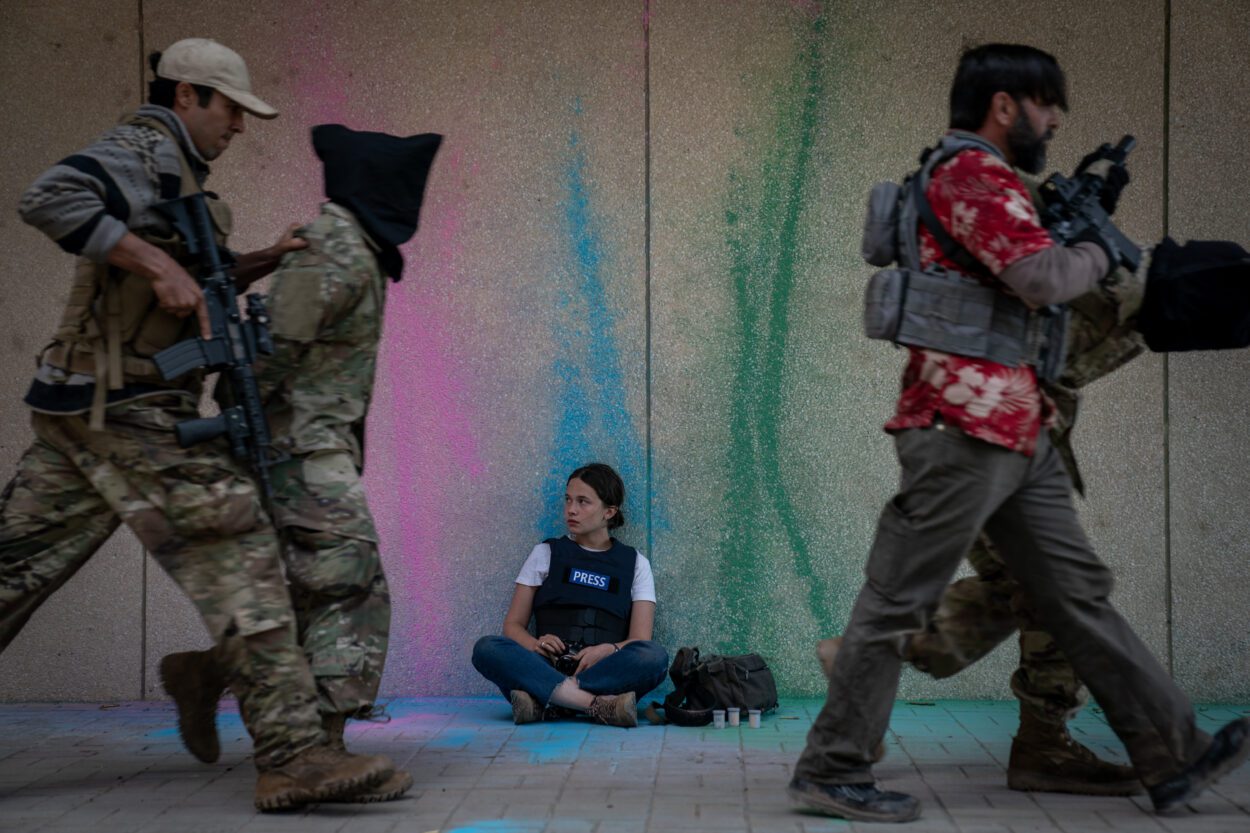
When it comes to a film, fewer things make me happier than when both audiences and critics can’t come to some general consensus. Wherever you fell in the spectrum of bad and good, chances are it was difficult for you to find someone who completely agrees with you as to what writer-director Alex Garland was saying with Civil War. Even after reading and listening to many interviews with Garland, I still can’t fully say I understand his intentions, and that is so satisfying to me. Civil War is a film that is designed to be rewatched and studied, not so much for the details but for its relationship to the shifting climate of politics and society, both today and tomorrow. Garland refuses to give us any specific details as to the cause of the conflict, aside from a few lines here and there, but is that an instance of an artist holding back? I don’t believe so, especially not with the film’s final few minutes.
I also don’t believe Garland is neutral. He simply doesn’t want to directly tell us how we should react to the events in the film. Yes, war is hell. But when you don’t know—or aren’t told—who to “root for,” it’s easier and clearer to see just how ugly it all is. Like Kirsten Dunst’s Lee Smith, I’d want out, too. Is Civil War showing us what could literally happen if we end up on the path we’re currently on? Yes and no. Garland is vague, because who knows what the future holds? The details aren’t important in the film. What matters is what happens, and rather than provide the answers to the questions the film proposes, Garland leaves it up to viewers to think for themselves. It is purposefully not a film for our time, but a film for our future.–-Michael Suarez
5. Monkey Man
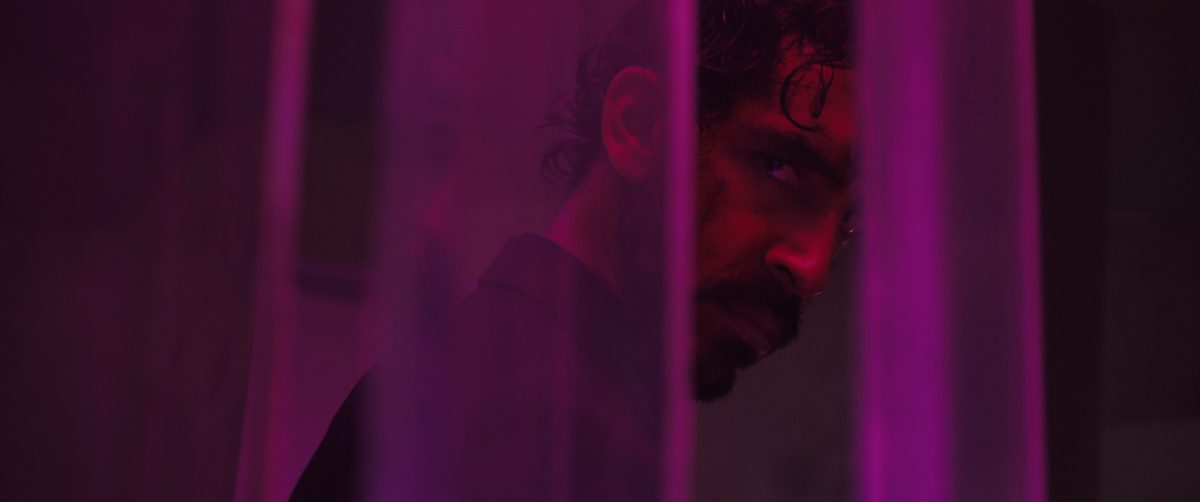
For some reason, between Kingdom of the Planet of the Apes, Godzilla X Kong: The New Empire and this, 2024 has become the year primates took over the big screen. Dev Patel has slowly built himself up as one of the all time great movie stars the modern era. And no, I don’t think that’s an exaggeration. Between Slumdog Millionaire, The Green Knight, Lion, The Personal History of David Copperfield he’s proven his quality as an all rounder, selling epic romances, intimate character dramas, ruminative fantasy odysseys, and even slapstick comedy. His versatility and commitment to his craft have no parallel in his generation and Monkey Man is a 118 minute long testament to that fact. When actors turn director, you can always see the thumbprints of the directors they studied but most usually give us actor vehicles and character dramas because that’s what they know…acting. But Dev Patel steps into the shoes of the auteur who gave him his big break, Danny Boyle, and displays the same mastery of slow-burn character piece and explosive fast-paced action.
Some have criticised the pacing and structure, calling it messy. I disagree. It’s a clear two part structure with each half a slow building ascent towards an extended action climax, each of which arrives just as you fear the film is about to drag, and then takes you by the collar and sends you careening through one seat-edged encounter after another. You feel every punch, kick and slash because, like the next film on this list, it took the time to ground itself in its characters. Monkey Man is more than a simple revenge movie, it’s a primal scream of anger on behalf of everyone touched by poverty, injustice and prejudice, delivered to the screen with as much force, commitment and intensity as could be asked for. It really cares what its saying and every drop of blood, sweat and tears shed in its production can be felt onscreen. It’s genuinely one of the best action movies ever made, up there with the likes of Hard Boiled, John Wick Chapter 4, Speed, Oldboy, The Raid 2, Fury Road and of course…—Hal Kitchen
4. Furiosa: A Mad Max Saga – Seth
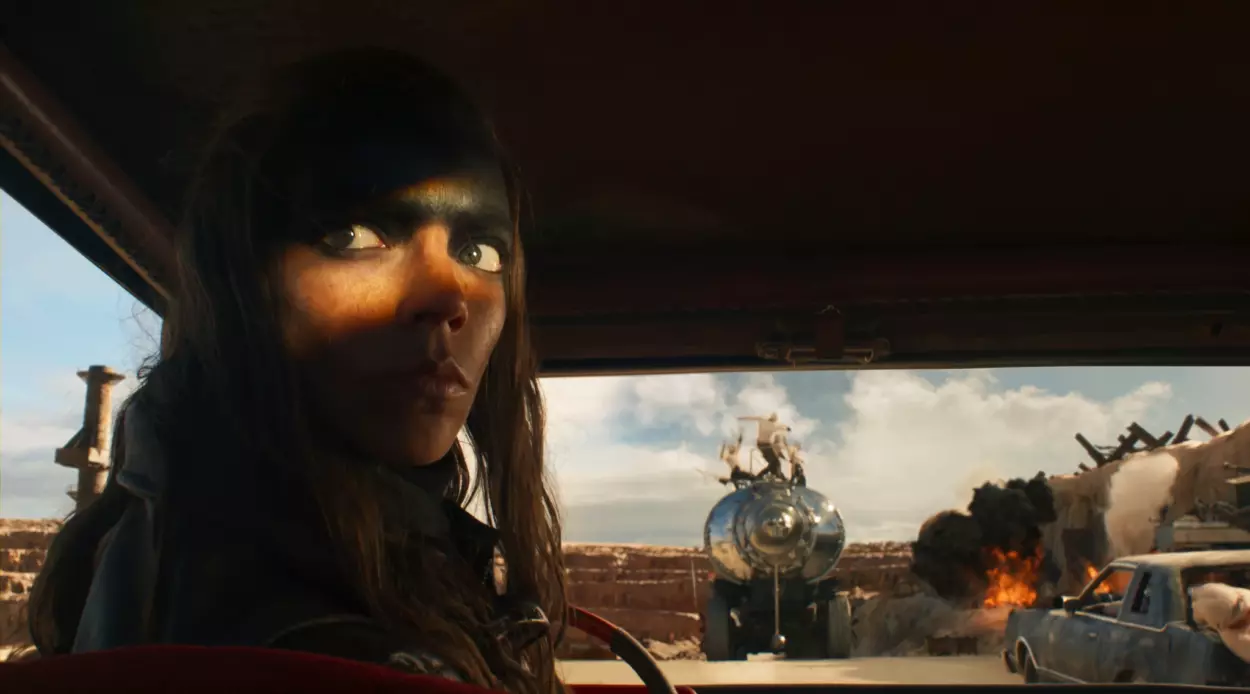
In a year without many tentpole releases, few films garnered more pomp and circumstance than Furiosa: A Mad Max Saga. Despite the disappointing box office returns thus far, critical consensus has echoed sentiment of an action-packed and rewarding entry into the George Miller-directed dystopian franchise. I myself have seen it twice in IMAX, both times transfixed for different reasons each visit. The first was similar to my first experience with Mad Max: Fury Road, taken aback by the daring visual style of Miller: the long takes of vehicular chaos bombarded by weapons of all shapes and sizes, the lush contrast of Australian blue skies with rugged desert dirt.
Miller uses the formula of what worked well in Fury Road and challenges his cast, crew, and audience once again. His cinematography, staging, and editing are as elite as it comes, and he accomplished it while nearing 80 years old! The bombastic performance of Chris Hemsworth as “Dementus” brings a unique villain to the screen as he helps mold the fate of Furiosa throughout her life, chewing scenery with intermixed philosophy and dark comedy. Like Robert Downey, Jr. in Oppenheimer, Hemsworth is now free from the MCU shackles and having a ball with this role. The second viewing allowed me to see all the action beats together in a symphony of sight and sound (tremendous sound design and musical score), but it was seeing the continuity pairing of Furiosa with its eventual Fury Road that was a true delight.
Anya-Taylor Joy brings a fierce intensity as the lead a woman of few words. The performance is an organic evolution into what Charlize Theron embodied in Fury Road. Seeing how Furiosa grows from an abducted child into a headstrong and determined woman out for revenge and escape back to home is a wholly satisfying prelude to the events of Mad Max: Fury Road. I can’t recommend Furiosa enough to those that are fans of the franchise in whole, or those even vaguely familiar with Fury Road. It is an exciting thrill ride that adds rich backstory and world-building to a modern action epic, and is one of my favorite films of the first half of 2024.—Seth Lamey
3. Love Lies Bleeding
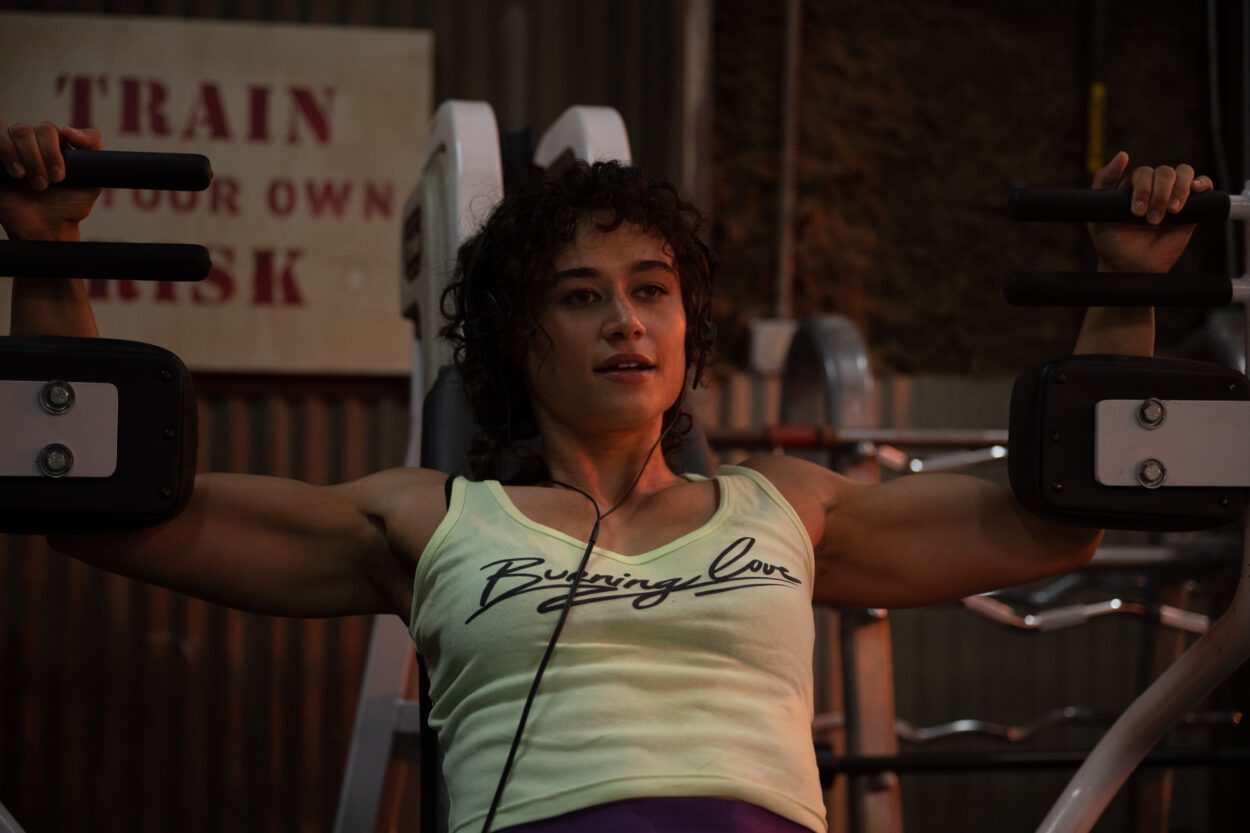
Love Lies Bleeding is the ambitious sophomore feature from director Rose Glass, an anxiety-inducing, high-stakes queer thrill ride. Glass takes an insanely surreal big swing in this one and knocks it out of the park. It is a complete departure from her first film while also still showcasing her roots in horror. With an insane body count and great body horror moments, Glass does not shy away from violence. Each actor in this film is all in. Glass can marry the crime family drama with the queer love story and neither outshines the other.
The incredible performances in this film are some of the best of the year. Ed Harris’s portrayal of crime lord Lou Sr. is a standout. Harris was polarizing and unsettling, he had an audience’s full focus. The chemistry between Kristen Stewart and Katy O’Brian was undeniable. The passionate and erotic sapphic love story between Lou (Stewart) and Jackie (O’Brian) at times is completely unhinged. Their relationship is heart-pounding and exhilarating, just like a new romance can be. For a film like Love Lies Bleeding, you have to be open to taking an insane joyride filled with blood and surreal images that you will be thinking about for a while. From this point forward, I am highly invested in Rose Glass’ career and where she goes next.—Chelsea Alexandra
2. Challengers
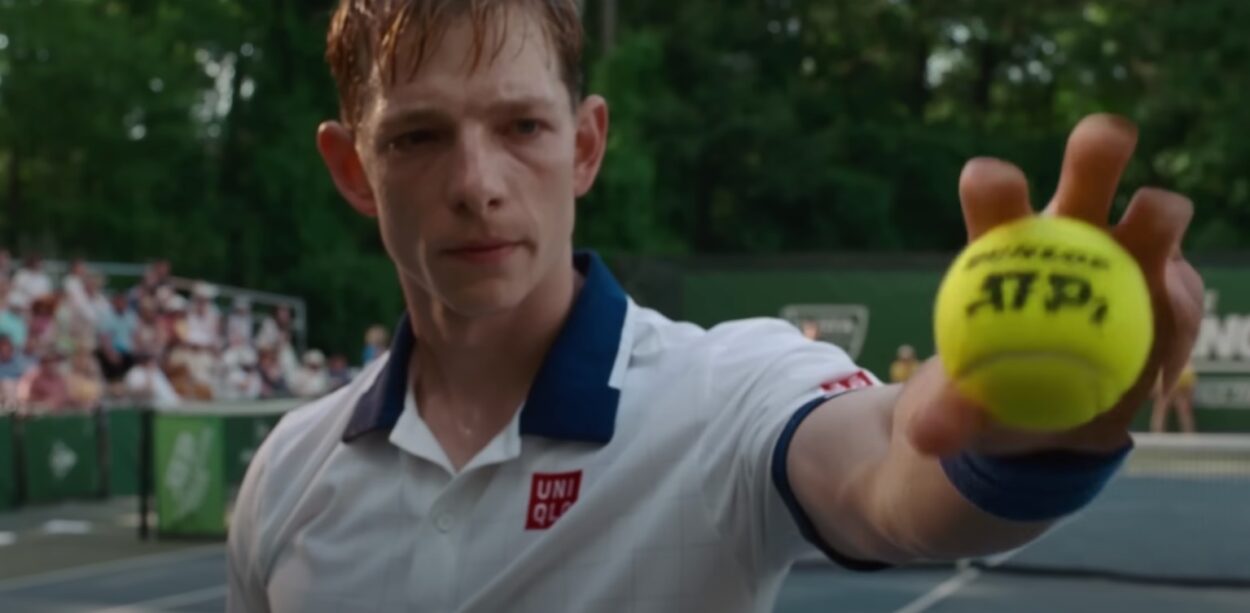
Another surprise entry on our Best of ’24 list is the sly, sexy sports movie Challengers, a film that will actually please not just fans of the sport it depicts but anyone pining for a the kind of smart adult-oriented filmmaking that seems these days to be all too rare. What Challengers does best is to pit three motivated, plausible characters against and with each other in a high-stakes arena, then give each of them cause to both love and betray each other.
Zendaya’s Tashi is the object of two young men’s attention ever since they were doubles partners and opponents in tennis’s cutthroat junior competition. And she knows it, exploiting their mutual passion with the expertise of a puppeteer, even when her own career is halted by injury. Mike Faist’s Art is the winner, at least up until the action of Challengers takes place, both in love and on court, having claimed multiple Grand Slam titles and married Tashi, who is now his coach; Josh O’Connor’s Patrick is the loser, down on his luck and his game, but who gets one surprising last chance at glory—and at Tashi—in a Challengers event. There, on court and off, the threesome’s passions explode once again.
Luca Guadagnino (Call Me by Your Name) is unafraid to dive deep into the (surprisingly good) script’s inherent melodrama, especially as its climax reaches a wild, weather-torn crescendo, and the tennis, so often rendered ineptly on film, is good enough to please even die-hard tennis fans who’ve longed to see their sport succeed on screen. The film’s final moments may enter the realm of the absurd, but Guadagnino and Zendaya got people talking about a tennis film in ways none other had.—J Paul Johnson
1. Dune Pt. 2
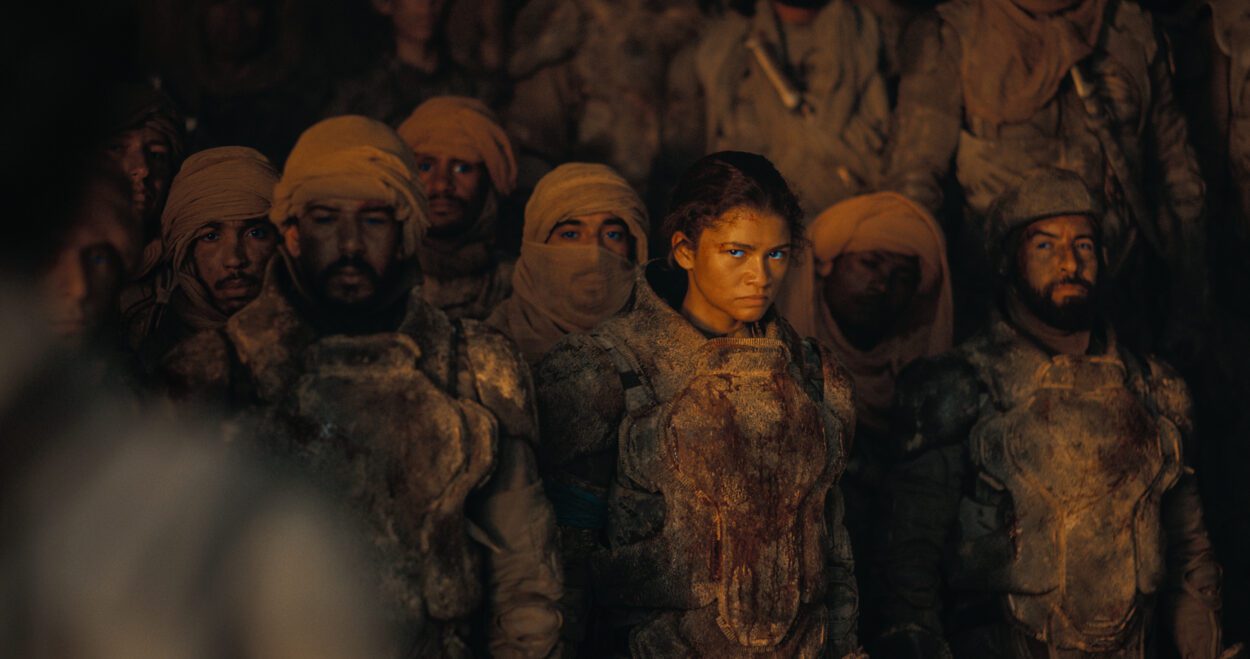
Dune: Part Two does everything a great sequel should do. It furthers the story and characterization of our main character Paul Arteries (an excellent Timothée Chalamet) while also introducing us to new characters, like the psychotic warrior Feyd-Rautha (played by Austin Butler). It advances the story and elevates the strong themes of religion, destiny, and false prophets. It is darker and more tragic than the first film and adds a surprising level of emotion to the story.
And as we’ve come to expect from director Denis Villeneuve, Dune: Part Two is a visual spectacle and technical marvel on every level. Villeneuve expands the worlds we were introduced to in the first film, adding more depth to this seemingly endless world. The production design and costumes are gorgeous and the cinematography by Greg Fraser is some of the year’s best, beautifully capturing the vast deserts of Arrakis and the monochromatic world of the Harkonens. Hans Zimmer’s score is extraordinary, and Joe Walker’s precise editing never allows the nearly three-hour-long film to feel slow or boring. The action is bigger and more exciting. Villeneuve is one of few directors in Hollywood who could make a movie at this scale while also keeping focus on the story. Dune: Part Two is a towering, epic film from Villeneuve and Film Obsessive’s best movie of 2024 so far.—Kevin Wozniak





Great list! A few on here I need to catch up with. I will totally second Evil Does Not Exist, The Beast, Furiosa, I Saw the TV Glow, Monkey Man and add Do Not Expect Too Much From the End of the World and the film I just reviewed for FO, Green Border.